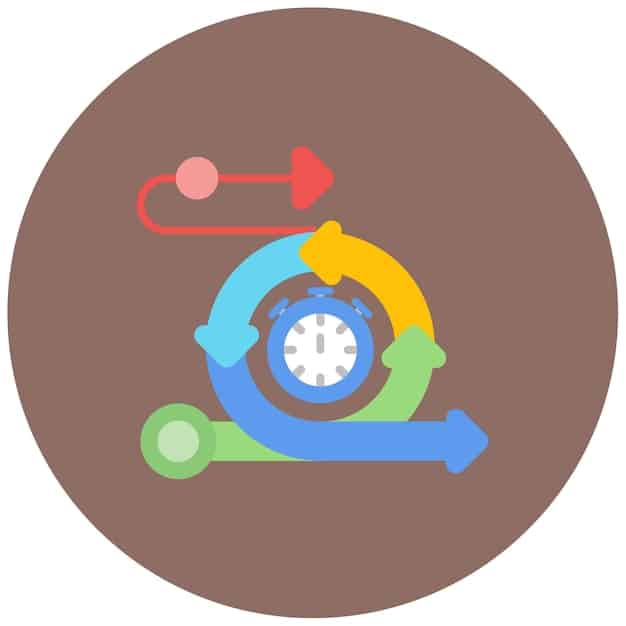NIST AI Risk Management Framework: 2025 Impact on US Businesses

The updated NIST AI Risk Management Framework will significantly impact US businesses in 2025 by providing a structured approach to manage AI-related risks, fostering responsible AI innovation, and ensuring compliance with emerging regulations.
The updated NIST AI Risk Management Framework impact on US businesses in 2025 is poised to be transformative, shaping how organizations develop, deploy, and manage artificial intelligence systems. Understanding this framework is crucial for navigating the evolving landscape of AI ethics and governance.
Understanding the NIST AI Risk Management Framework
The NIST AI Risk Management Framework (AI RMF) is a comprehensive guide developed by the National Institute of Standards and Technology (NIST) to help organizations manage the risks associated with artificial intelligence. It provides a structured approach to identify, assess, and mitigate AI-related risks, promoting responsible AI innovation and deployment.
Key Components of the AI RMF
The AI RMF consists of four main functions: Govern, Map, Measure, and Manage. Each function contains a set of categories and subcategories that provide detailed guidance on implementing effective risk management practices.
- Govern: Establishes organizational culture, policies, and processes to manage AI risks.
- Map: Identifies and documents the AI systems, their potential risks, and their impact on stakeholders.
- Measure: Quantifies and assesses the risks associated with AI systems, using metrics and indicators.
- Manage: Implements risk mitigation strategies and continuously monitors the effectiveness of these strategies.
The Importance of the Updated Framework
The updated NIST AI RMF reflects the rapid advancements in AI technology and the growing awareness of its potential risks. By providing a more comprehensive and adaptable framework, NIST aims to help organizations stay ahead of emerging challenges and ensure that AI systems are developed and deployed responsibly.

In conclusion, understanding the NIST AI Risk Management Framework is critical for US businesses looking to leverage AI while mitigating potential risks. By following the framework’s guidelines, organizations can promote responsible AI innovation and build trust with stakeholders.
How the Updated Framework Differs from the Original
The updated NIST AI Risk Management Framework builds upon the original framework by incorporating lessons learned from real-world implementations and addressing new challenges posed by evolving AI technology. Several key differences distinguish the updated framework.
One significant change is the increased emphasis on stakeholder engagement. The updated framework recognizes that AI risks can impact a wide range of stakeholders, including individuals, communities, and organizations. It encourages organizations to actively involve stakeholders in the risk management process to ensure that their concerns and perspectives are considered.
The updated framework also provides more detailed guidance on measuring and evaluating AI risks. It introduces a set of metrics and indicators that organizations can use to quantify the potential impact of AI risks and track the effectiveness of mitigation strategies.
Enhanced Guidance on Risk Mitigation
Furthermore, the updated framework includes enhanced guidance on risk mitigation strategies. It provides a menu of options that organizations can use to address AI risks, ranging from technical controls to policy changes. The framework also emphasizes the importance of continuously monitoring and adapting mitigation strategies to address emerging risks.
The updated NIST AI RMF offers significant enhancements over the original, addressing the changing landscape of AI risks and promoting responsible AI practices through increased stakeholder involvement, comprehensive risk measurement, and enhanced mitigation strategies.

Specific Impacts on US Businesses in 2025
In 2025, the updated NIST AI Risk Management Framework will have several specific impacts on US businesses. These impacts will affect how organizations develop, deploy, and manage AI systems, as well as their relationships with stakeholders.
One of the most significant impacts will be the increased scrutiny of AI systems. As awareness of AI risks grows, stakeholders will demand greater transparency and accountability from organizations that use AI. The NIST AI RMF provides a framework for organizations to demonstrate that they are managing AI risks responsibly, which can help to build trust with stakeholders.
The framework will also drive the adoption of more robust AI risk management practices. As regulatory requirements and industry standards evolve, organizations will need to implement comprehensive risk management programs to ensure compliance and avoid reputational damage. The NIST AI RMF provides a detailed roadmap for developing and implementing such programs.
Driving Innovation and Competition
Furthermore, the framework will foster responsible AI innovation. By providing a clear understanding of AI risks and how to manage them, the NIST AI RMF will enable organizations to experiment with new AI technologies and applications with greater confidence. This can lead to new products, services, and business models that create value for customers and society.
- Enhanced Trust: Stakeholders are more likely to trust businesses that adhere to the NIST AI RMF.
- Regulatory Compliance: Helps businesses align with emerging AI regulations and standards.
- Competitive Advantage: Businesses can differentiate themselves by demonstrating responsible AI practices.
The updated NIST AI Risk Management Framework impact on US businesses in 2025 will be multifaceted, driving increased scrutiny, promoting robust risk management practices, and fostering responsible innovation. These effects underscore the importance of understanding and implementing the framework effectively.
Preparing Your Business for the Updated Framework
Preparing your business for the updated NIST AI Risk Management Framework requires a strategic and proactive approach. Organizations should take steps to understand the framework’s requirements, assess their current AI risk management practices, and develop a plan for implementing the necessary changes.
Understanding the Framework Requirements
One of the first steps is to familiarize yourself with the details of the AI RMF. This includes understanding the four functions (Govern, Map, Measure, and Manage), as well as the categories and subcategories within each function. Organizations should also track updates and interpretations of the framework to ensure that they are following the latest guidance.
Next, conduct a comprehensive assessment of your current AI risk management practices. This assessment should identify any gaps between your current practices and the requirements of the NIST AI RMF. It should also evaluate the effectiveness of your existing risk mitigation strategies and identify areas where improvements can be made.
Based on the assessment, develop a plan for implementing the necessary changes to your AI risk management program. This plan should include specific goals, timelines, and responsibilities. It should also address any resource constraints and prioritize the most critical areas for improvement.
Taking Proactive Steps
- Educate your team on the NIST AI RMF and its implications for your business.
- Develop a comprehensive AI risk management policy that aligns with the framework.
- Implement processes for identifying, assessing, and mitigating AI risks.
Preparing for the updated NIST AI Risk Management Framework requires understanding the framework, assessing current practices, and implementing a detailed plan for necessary changes. By taking these steps, businesses can ensure compliance, mitigate risks, and foster responsible AI innovation.
The Role of AI Ethics and Governance
AI ethics and governance play a crucial role in the successful implementation of the NIST AI Risk Management Framework. These principles provide a foundation for responsible AI innovation and deployment, ensuring that AI systems are aligned with societal values and ethical considerations.
AI ethics refers to the moral principles and values that guide the development and use of AI. These principles may include fairness, transparency, accountability, and respect for human rights. By integrating AI ethics into their risk management programs, organizations can ensure that their AI systems are used in a way that benefits society and minimizes potential harm.
AI governance refers to the policies, processes, and structures that organizations use to manage AI risks and ensure compliance with ethical principles. Effective AI governance requires a cross-functional approach that involves representatives from various departments, including legal, compliance, IT, and business operations.
Establishing Ethical Guidelines
To promote AI ethics and governance, organizations should establish clear ethical guidelines and governance frameworks for their AI systems. These guidelines should address issues such as data privacy, algorithmic bias, and the potential for unintended consequences. They should also define roles and responsibilities for AI risk management and ensure that decisions about AI are made in a transparent and accountable manner.
AI ethics and governance are integral to the NIST AI Risk Management Framework. By integrating ethical guidelines and governance frameworks, organizations can ensure that their AI systems are used responsibly, fostering innovation while upholding societal values.
Best Practices for Implementing the AI RMF
Implementing the NIST AI Risk Management Framework effectively requires adopting best practices that ensure comprehensive risk management and align with organizational goals. These practices involve continuous monitoring, stakeholder engagement, and adaptive strategies.
One of the most important best practices is to continuously monitor AI systems for emerging risks and changes in the risk landscape. This includes tracking the performance of AI algorithms, monitoring data quality, and assessing the impact of AI systems on stakeholders. By continuously monitoring AI systems, organizations can identify potential problems early and take corrective action before they cause significant harm.
Another best practice is to actively engage stakeholders in the AI risk management process. This includes soliciting feedback from employees, customers, and other stakeholders about their concerns and perspectives on AI risks. Engaging stakeholders can help organizations identify blind spots and develop more effective risk mitigation strategies.
Adaptive Strategies and Continuous Improvement
Organizations should also be prepared to adapt their AI risk management strategies as needed. The AI landscape is constantly evolving, and new risks are emerging all the time. By being flexible and adaptable, organizations can stay ahead of emerging challenges and ensure that their AI systems are used responsibly.
- Regular Audits: Conduct periodic audits of AI systems to ensure compliance with the framework.
- Training Programs: Implement training programs for employees on AI ethics and risk management.
- Feedback Mechanisms: Establish feedback mechanisms for stakeholders to report concerns and suggestions.
Implementing the NIST AI Risk Management Framework effectively involves continuous monitoring, stakeholder engagement, and adaptive strategies. By following these best practices, organizations can maximize the benefits of AI while minimizing potential risks.
| Key Point | Brief Description |
|---|---|
| 🛡️ AI RMF Functions | Govern, Map, Measure, Manage – the core components for AI risk management. |
| 🤝 Stakeholder Engagement | Involving stakeholders ensures diverse perspectives on AI risks and mitigation. |
| 📈 Measuring AI Risks | Quantifying AI risks helps businesses track and improve mitigation effectiveness. |
| 🌱 Responsible Innovation | The framework promotes innovation by managing and minimizing potential harms. |
FAQ
What is the NIST AI Risk Management Framework?
▼
The NIST AI Risk Management Framework (AI RMF) is a guide developed by NIST to help organizations manage risks associated with artificial intelligence, promoting responsible AI.
How will the updated framework impact US businesses?
▼
The updated framework will increase scrutiny, promote robust risk management practices, and foster responsible AI innovation within US businesses.
What are the main functions of the AI RMF?
▼
The main functions are Govern, Map, Measure, and Manage, providing a structured approach to AI risk management.
Why is stakeholder engagement important in AI risk management?
▼
Stakeholder engagement ensures that diverse perspectives are considered, leading to more effective and responsible AI practices.
How can businesses prepare for the updated framework?
Educate your team, develop a risk management policy, and implement processes to identify, assess, and mitigate AI risks.
Conclusion
The updated NIST AI Risk Management Framework presents both challenges and opportunities for US businesses in 2025. By embracing a proactive approach to AI risk management and prioritizing ethical considerations, organizations can navigate this evolving landscape and unlock the full potential of AI while minimizing potential harms.
Read more content





